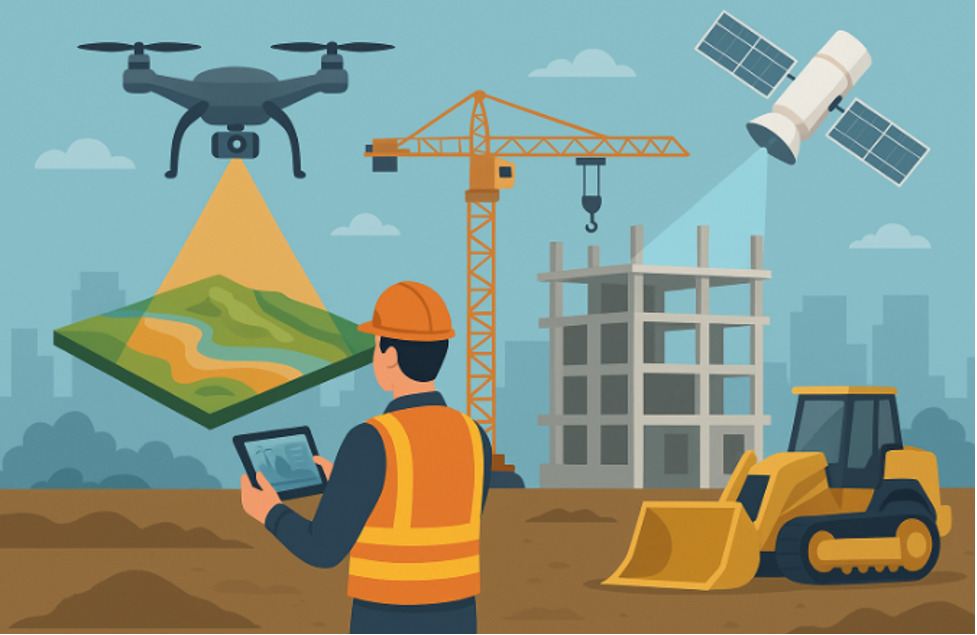Technology has changed the way we do almost everything, and construction is no exception. One of the technologies that have become extremely useful in construction is remote sensing.
Remote sensing is the process of collecting data from a distance, usually through satellites, drones, or sensors. It helps construction teams gather important information about a site without being physically present.
This technology is improving construction projects in many ways, from planning and design to monitoring progress and ensuring safety. In this blog, we will explore the significance of remote sensing in construction and how it is reshaping the industry:
1. Better Site Surveys and Mapping
Before starting a construction project, it’s important to know the details of the land. Remote sensing makes this much easier by providing clear maps and images of the area. Drones and satellites can capture detailed data of the land’s surface, showing features like elevation, trees, and nearby structures.
This allows civil engineers and Architects in Phoenix to make better decisions before construction begins.
2. Smarter Planning and Design
Good planning is key to any successful construction project. With remote sensing, construction teams can gather data about the site to help with designing buildings or roads. Using images from drones or satellites, they can create 3D models of the land.
These models help designers see exactly what the land looks like, which makes it easier to plan buildings or infrastructure that will fit well in the space. It can also highlight potential problems, like flood risks or unstable ground, helping to avoid costly mistakes later.
3. Monitoring Construction Progress
Keeping track of how a project is progressing is important for staying on schedule and within budget. Remote sensing helps monitor construction sites without needing workers to be physically present at every step.
Drones are commonly used to take pictures of the site from above, giving project managers a view of how the work is going. This allows them to compare the current state of the project with the original plans and quickly spot any delays or issues.
4. Improving Safety and Reducing Risks
Construction sites can be dangerous places, but remote sensing helps keep workers safe. Using drones or other remote tools, construction teams can inspect hard-to-reach or hazardous areas without sending people into risky situations.
For example, drones can be used to check tall buildings or dangerous structures, making sure everything is in good condition. This helps to avoid accidents and ensures that workers are not exposed to unnecessary risks.
5. Supporting Environmentally Friendly Construction
Today, there is a strong focus on sustainability in construction, and remote sensing plays a role in that. Remote sensing helps construction teams understand the environment and land before starting a project. It provides data on vegetation, water sources, and natural features, which help planners choose the best locations for construction.
By avoiding sensitive areas, such as wildlife habitats or wetlands, remote sensing ensures that construction projects have a smaller environmental impact.
6. Saving Time and Money
Construction projects can be expensive and time-consuming, but remote sensing helps save both. By using technology to gather data quickly and accurately, construction teams can avoid delays and reduce mistakes. This means projects are completed faster and more efficiently. Also, remote sensing helps reduce costs by making it easier to manage resources like materials and labor, ensuring that they are used in the best way possible.
Conclusion
Remote sensing technologies are making a big difference in modern construction. They help construction teams collect accurate data, make better decisions, and work more efficiently at every stage of a project. From planning and design to safety and protecting the environment, remote sensing is changing the way we build.
Architects and Civil Engineers in Phoenix, AZ rely on this technology to plan, design, and assess projects with greater accuracy.It also helps ensure that every structure is built to meet safety, quality, and environmental standards.
These tools will continue to play a bigger role in the future, helping make construction projects cost-effective, safer, and more eco-friendly.





